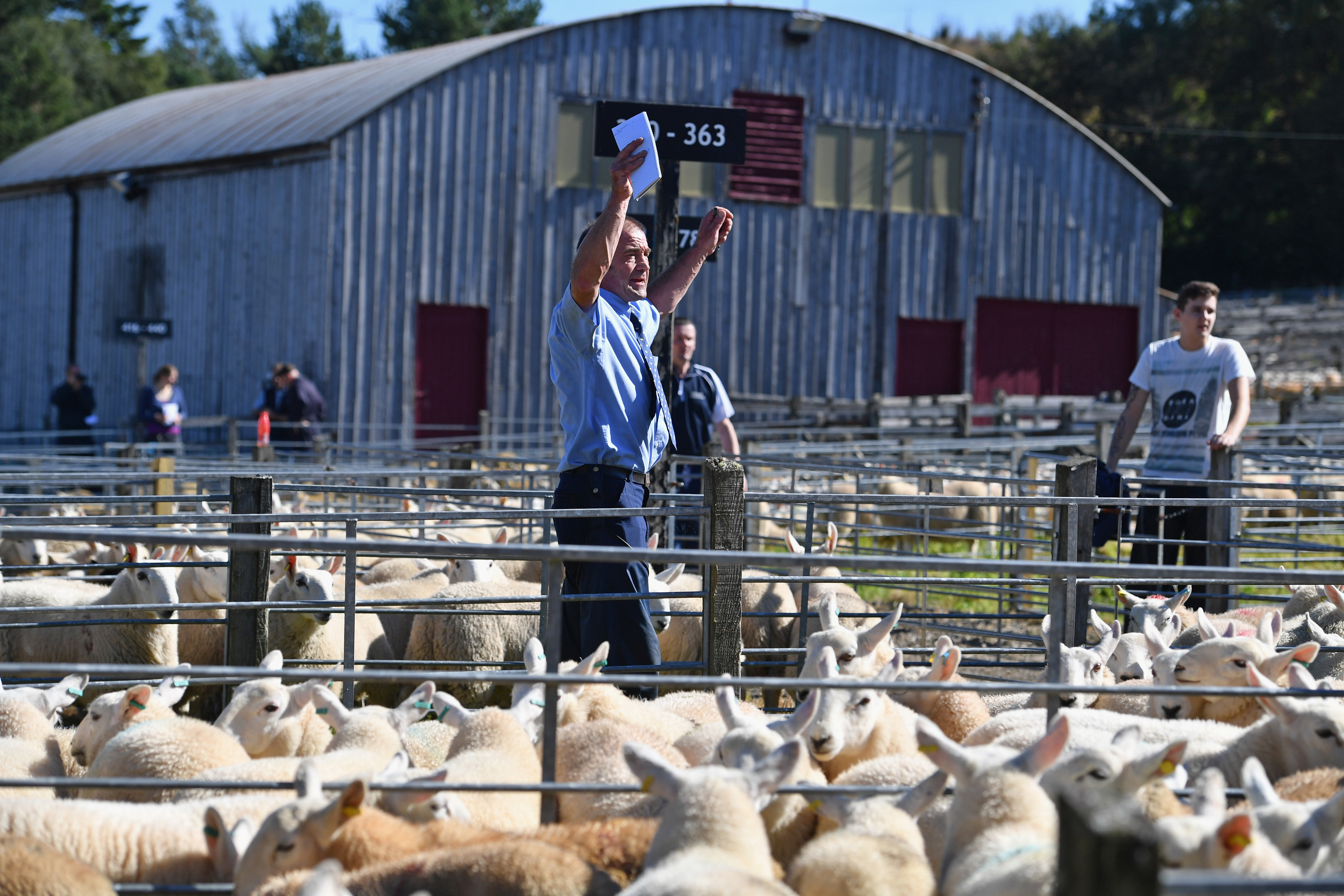Sutherland’s shepherds, farmers and landowners may not have voted en masse to leave the EU, but at yesterday’s Lairg sale of around 16,000 lambs they reaped the referendum rewards of weak sterling and booming sheepmeat prices.
Trade at Lairg, the annual barometer of confidence in the British sheep industry, was as bright and sunny as the scorching weather outside the tiny wooden ring which sits on a heather hillside and attracts buyers from Perthshire, Fife, southern Scotland, Wales and the far south of England.
Bidders competed to buy hill Cheviot wedder lambs for the fat trade later this year and top quality ewe lambs for breeding. And the prices they paid reflected the £10-£15 a head upswing in the finished lamb price since the referendum resulted in a drop in the pound and made home-produced lamb better value than imports from New Zealand. Supplies have also been exceptionally tight.
United Auctions chairman David Leggat confirmed new buyers were investing in the distinctive “Lairg-type” lambs which are compact, hardy sheep with tight skins and sweet heads.
“We’re seeing new buyer blood here today,” he said. “New people are buying swathes of 100-200 lambs for breeding and we’re seeing other lots go to regular buyers from Aberdeenshire, Yorkshire, Cumbria and everywhere in between.”
One new buyer was Douglas Gray, farm manager at Portmore Estate at Eddleston near Peebles. He bought 220 ewe lambs to stock a new farm and he admitted he’d had to pay more than expected to secure the top stock.
“The industry is benefitting from the Brexit vote knocking the pound to bits. We’re seeing a sharpening of prices but these Lairg-type lambs are in demand and in future I think we’ll see more people switching to them as the Cheviot Mule is a better cross than the traditional Blackie Mule.”
Mr Gray bought his lambs from Scottish sheep farmer of the year and Courier contributor, Joyce Campbell of Armadale Farm on the far north coast of Sutherland. She sold her second draw of 207 lambs for £102 a head, a rise of £22 on the year. Her top draw made £108, up £10, and her wedders were up £8 to £66.50 for her top draw.
She was thrilled with the day’s booming trade.
“I’m delighted. The lambs are fitter and stronger this year and I just hope the buyers come out on the right side when it comes to selling them fat in the spring,” she said.
The National Sheep Association’s (NSA) Scottish development officer, George Milne said the improvement in fortunes had put confidence back in the sheep sector.
“Fat lambs are now making money for finishers and I hope that encourages other farmers to consider going in to sheep production,” he said.
Achentoul Estate owner Sir John Nutting sold a record 1119 lambs, 700 of which were wedders. His top draw of ewe lambs were up £23 a head and the average was up £6 a head overall.
“We’re very pleased indeed,” he said. “It’s a credit to the shepherds who had to cope with the worst lambing weather we can remember in north-east Sutherland yet were able to produce a record quantity of lambs. Trade like this puts confidence into the breeding sheep industry.”
Trade was too good for some buyers who had to go home with fewer animals than they had planned. John Roberts, a finisher from North Wales, usually buys 2000 wedders but said he’d have to make do with just one lorry load of around 650 sheep this time.
“I’ve been trying hard to buy more but they’ve been a good price and I have to factor in the expense of taking them all the way back to Wales,” he said. “But I’ll be back.”










